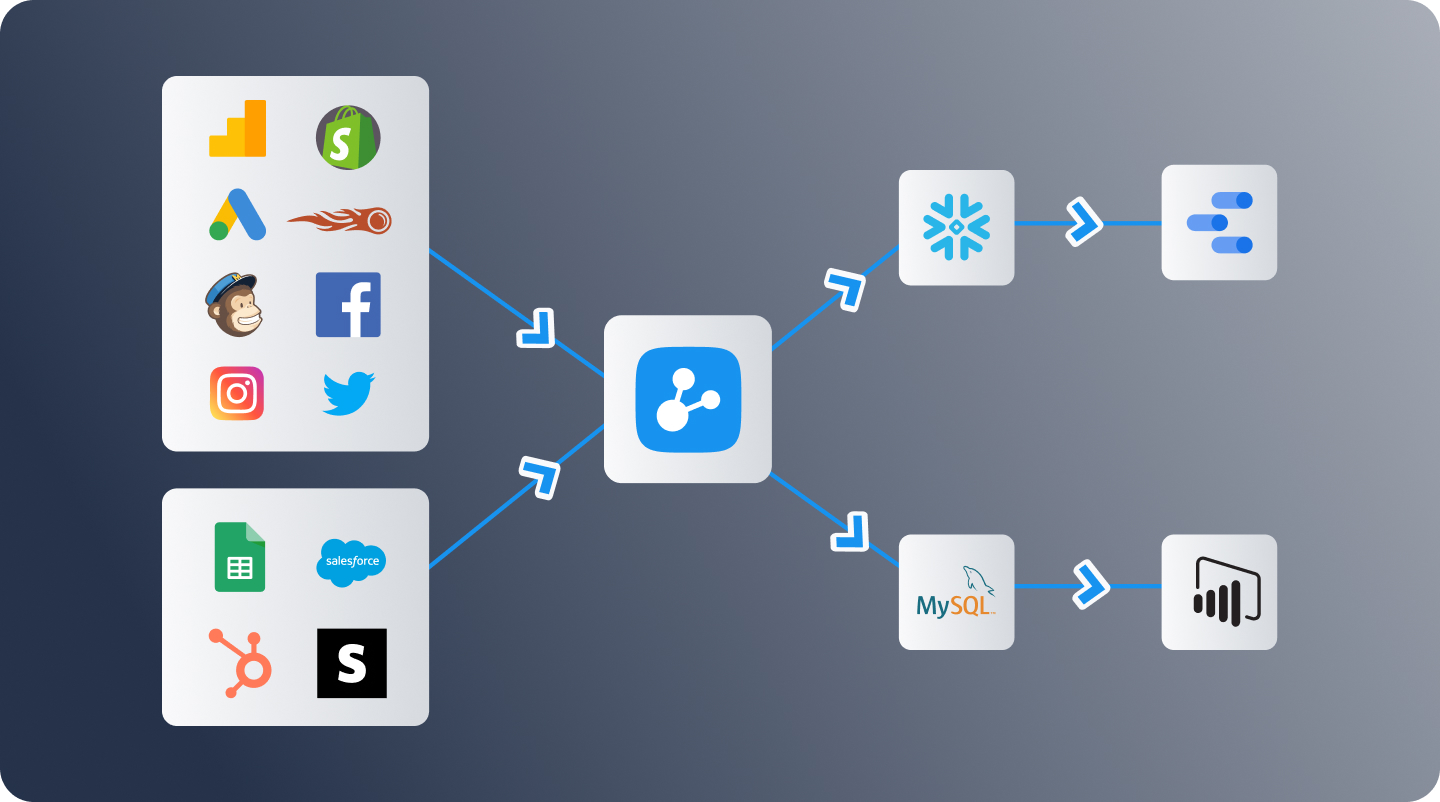From “big data” to “small and wide” data has become our new normal. Our data demands are consistently becoming more and more complex, requiring more and more resources and thus, higher costs, just to manage.
Even in just the last several years, the data environment has changed drastically through the proliferation of the cloud. Companies that used to subsist on (maybe) a handful of cloud systems now utilize dozens or hundreds, supporting every facet of their business from CRM to social media, advertising, website performance, and more. And the reality is: the collection of cloud services is only growing for each company.
The Rise of Complexity in Internal Data Systems

Cloud Systems in Companies 5 Years Ago
The compulsion, when faced with growing complexity, can be to find a single vendor solution to “do it all,” assuming that such a system would reduce the severity of the issue. All-in-one solutions are tempting, but they are typically generalist tools that lack specialty and expertise in any area of management. The result: a mediocre system that doesn’t come close to doing what you need, and costs a fortune.

Cloud Systems in Companies Now
Instead, we urge you to lean into the complexity of it all, and we don’t mean fighting fire with fire—the best way to manage the chaos of disparate data sources is with a composable data architecture, which is more powerful by being kept in pieces.
Gamers Understand the Problem Inherently
Take for example a computer gamer: in order to adapt to the power requirements of increasingly demanding games, a player who was forward-thinking enough to purchase a PC can upgrade and switch out pieces of their hardware to suit the demand, whether that be more RAM, better graphics cards, etc.
Similar to the gamer analogy, one of the main advantages here is that these data architectures are built slowly, over time, piece-by-piece. In the realm of cost savings, many of the components of a data architecture can be free (or very low cost) open-source tools. However, in order for this system to work, the system components of your architecture must be interoperable.
Data Integration: the Missing Piece
Data integration platforms such as Dataddo do the work of bringing interoperability to disparate systems, thereby providing the glue that keeps a composable architecture together. In addition to the integration, ETL platforms also help expedite the typically tedious integration process and can provide the flexibility needed to support changing needs over time. For example:

A client starts her business with limited demands. Only Ads and Analytics plus Data Studio for visualizations, all Google applications which can interoperate without difficulty.

As the business develops, more cloud applications are added to handle growing needs of the company, from marketing to customer outreach, eCommerce, and more. A data warehouse is added to keep this data accessible and provide transformations to ease the load into Google Data Studio, but getting the data into the warehouse proves a much greater challenge than making use of it.

With the addition of an ETL platform, the extraction of data from sources and loading into multiple destinations can be centrally managed, adding sources as needed and maintaining stable data pipelines no matter the volumes entailed. This is essential to enterprise data integration.
Composable Architecture is an Investment in the Future
By keeping the tools in your control, a composable data architecture will give you the ability to grow and develop as any company needs to without the growing pains of all-in-one data tools.
|
See how Dataddo can help your business Just a few quick steps to get your data to your dashboard for better analysis, without the hassle. |




Comments